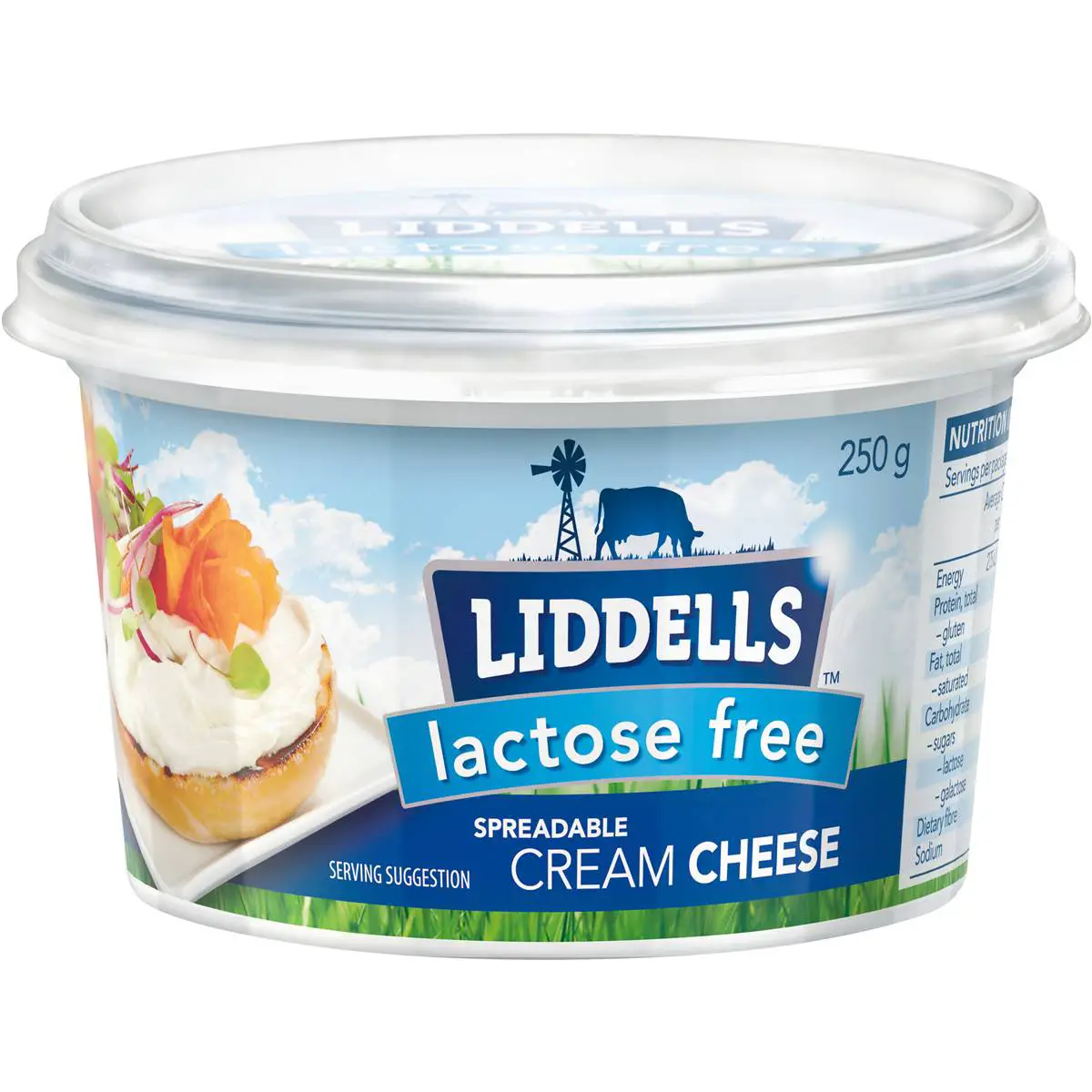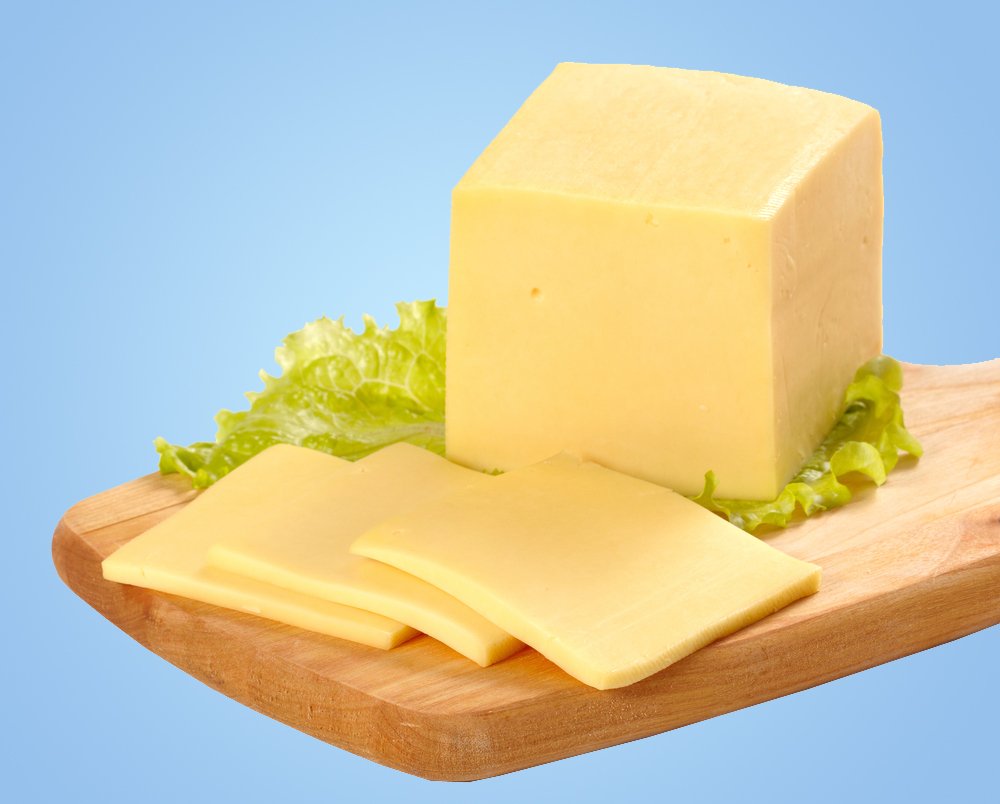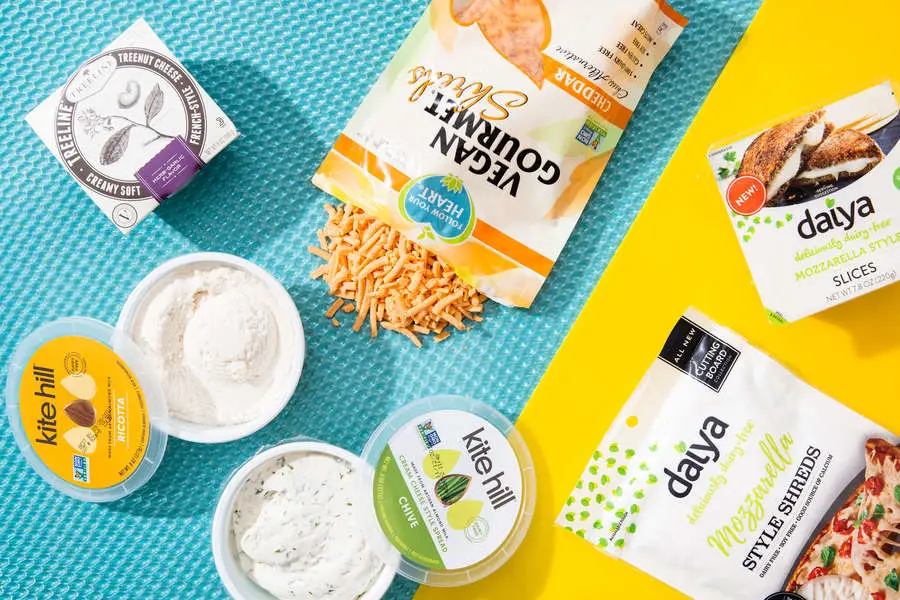Nearly 65% Of The Human Population Struggles With Lactose Intolerance
These poor souls try their best to avoid dairy and the physical discomfort that comes with itnot to mention dealing with the uniquely profound emotional distress that comes from feeling like youve been cursed to a life without cheeseor have you?
What is lactose and why are some people intolerant?
Lactose is a type of sugar found in milk and other dairy products. In the body, lactose is broken down into simple sugars by an enzyme called lactase. People are lactose intolerant when their bodies dont make enough lactase. Without lactase, the lactose cant be properly digested and causes gastrointestinal distress. Some people are more intolerant than othersit all depends on how much lactase your body is able to make.
Does this mean lactose intolerants can never have cheese?
Were happy to report there are some cheeses that lactose intolerant individuals can still enjoy without gastrointestinal consequence.
While fresher cheeses have a high percentage of lactose, aged cheeses have much of their lactose transformed into less harmful lactic acid. Lactose is also separated and drained off with the whey during the aging process, which brings the lactose percentage down with it.
What cheeses can lactose intolerant folks eat?
Do Bananas Have Lactose
Thats whats so great about banana milk. Unlike dairy milk, banana milk doesnt have calcium or protein, but one banana has about as much sugar as one cup of milk and is a good source of vitamins C and B6, manganese, potassium, dietary fiber, biotin, and copper. Its also vegan, lactose free, and nut and grain free.
How To Use Goat Cheese In Salads And Side Dishes
The best way to enjoy goat cheese in salads and sides is to simply crumble them on top of the dish. If you have a hot side dish, fold them through the vegetables and allow the goat cheese to melt and provide extra creaminess.
You can also whip them to create a salad dressing, crumb them to make delicious chunks for salad toppers or simply served them on the side for people to eat as they wish. Baked goat cheese is also a fantastic way to enjoy it warm.
Flavoured goat cheese is also a great way to enjoy it in side dishes and salad. Cranberry goat cheese, for example, is absolutely delicious and can give a salad that extra sweetness from the cranberries.
Read Also: Why Does Babybel Cheese Come In Wax
What Cheeses Are Naturally Lactose Free
Other aged cheeses like Colby Jack, Monterey Jack, Pepper Jack, Swiss and Parmesan also contain little or no lactose. You can learn more about the Cheesemaking process here! Look for the Lactose-Free icon on the packaging of your favorite Cabot cheese products to be sure they are naturally lactose-free.
With lactose intolerance, you can still eat cheese, but choose carefully. Hard, aged cheeses like Swiss, parmesan, and cheddars are lower in lactose. Other low-lactose cheese options include cottage cheese or feta cheese made from goat or sheeps milk.
In this regard, What happens if a lactose intolerant person eats cheese?
People with lactose intolerance are unable to fully digest the sugar in milk. As a result, they have diarrhea, gas and bloating after eating or drinking dairy products. The condition, which is also called lactose malabsorption, is usually harmless, but its symptoms can be uncomfortable.
Is there lactose free mozzarella cheese?
Cheese with trace levels Natural, aged cheese can be digested by many people with lactose intolerance. Cheese with low levels Fresh unripened cheese are not aged.
Also, What to do if you ate cheese and youre lactose intolerant?
Eat smaller portion sizes. Try lactose-free products.
Can I eat mozzarella cheese if I lactose intolerant?
Are Lactose Free And Dairy Free The Same

This is one of the most common questions regarding the choice of products when a milk allergy or an intolerance occurs.
- Lactose free products are always made with milk, but with no or minimum percentage of lactose. They still contain milk proteins , for this reason they are indicated for lactose intolerant people.
- Dairy free products, instead, are made without milk or any other of its component. The term dairy refers to all the products derived from milk of animal origin. Therefore dairy-free products are indicated for people with milk allergies.
You May Like: Flat Lay Backdrop Boards
Lactose And Cheese: Are You Really Lactose Intolerant The Cheesemonger
Know anyone who doesnt eat cheese due to lactose intolerance? Or perhaps you yourself have to turn down cheese because of a lactose allergy? What you probably dont know is that lactose intolerance should NOT affect cheese consumption. You may actually be suffering from something else!
Most cheeses dont contain lactose! Whats happening when milk turns to cheese is a souring process called acidification, whereby the lactose in milk is converted into lactic acid. This is the magical fermentation process in cheesemaking, when a sugar in this case, milk sugar, or lactose is converted into something else in this case, lactic acid, which happens to be an entirely different entity from lactose. By the time a cheese is made, most or all of the lactose that had been present in the milk no longer remains.
The longer that milk is left to sour, the greater the opportunity for all of that lactose to dissipate into lactic acid. A longer period of acidification allows the protein chains to form even stronger bonds, which will result in a firmer curd and ultimately a firmer cheese that can age longer. Therefore, its the harder, drier, and more aged cheeses that will be the safest to eat if youre lactose intolerant. Fresher cheeses that are higher in moisture may retain a small amount of lactose because the milk has not been left to ferment completely. People who are lactose intolerant may have issues with fresher styles.
So What Cheeses Can Lactose
Using lactose percentages composed and collected by the aptly named Steve Carpers Lactose Intolerance Clearing House , here are some of the most LII-friendly cheeses on the market. Remember, you want to get below 5 grams of sugar per serving, or in these terms, at or below the 2-3% lactose range. For reference, whole milk has a lactose average ranging from 3.7-4.8%.
You May Like: Can You Have Cheese On A Low Carb Diet
Also Check: How Long Does Babybel Last In The Fridge Unopened
Heres Our Advice For Safe Cheese Eating
While its true that some cheeses are lower in lactose, its important to keep serving sizes in mind. Even a low lactose cheese may screw with your stomach if you eat a ton of it. And the truth is that even among folks with diagnosed lactose intolerance, sensitivity to lactose can vary greatly, Dr. Agarwal explains. Something that barely affects one person could leave another curled up in the fetal position with stomach cramps, which is why Sasson cautions against throwing back a bunch of cheese without giving it a try first. No matter what cheese youre eating , she recommends tasting a small amount first, then giving yourself time to see how your body reacts.
In general, its also best to eat cheese as part of a larger meal whenever you can, because eating it with other foods can make it easier to digest, Sasson says.
And unfortunately, Dr. Agarwal says there isnt always an easy way to know for sure how much lactose is in a product, unless its explicitly marked low-lactose or something similar. So if youre really not sure how much lactose you should eat, check in with your doctor first.
If you cant tolerate even a small amount of Parmesan, your problem with dairy might be something elselike a milk allergy. Sasson says that while lactose intolerance isnt life threatening, a severe allergy definitely can be, so if youre not sure what you have or just how sensitive you are, talk with your doctor before experimenting with any cheeses.
Related:
What Cheese Has The Most Lactose
Fresh cheeses and highly processed cheeses contain the greatest amounts of lactose in their composition. The following are the primary perpetrators: Feta contains 4.1 percent lactose on average. Ricotta has a lactose content ranging from 0.2 to 5.1 percent.
Recommended Reading: Philly Cheese Steak Pizza Dominos Ingredients
Cheese You Should Avoid
If you are lactose intolerant, you should avoid American cheese especially the pasteurized processed kind because it has lactose percentage levels as high as 14 percent. Other cheeses with high sugar levels include
- Colby
- Feta
- Velveeta .
Even though you or a family member might be lactose intolerant, it doesnt mean you cant enjoy some dairy products. However, there are some who cant tolerate any amount of lactose without discomfort, so always use caution. Start with a small portion of foods that are low in lactose and see how you feel.
If you are nervous about trying them out on your own, make an appointment with your gastroenterologist. He or she can give you a lactose intolerance test to see just how severe your condition is, and also give you an idea of what kind of dairy you can safely add to your diet.
/7how To Make Goat Cheese At Home
If you love the idea of goat cheese but cannot source it in your region, dont worry. You can make goat cheese at home with a simple procedure. Heat 2 kg of pasteurised goat milk in a pot until it comes to a boil. Once the bubbles start appearing in the corners, remove the pot from heat and add ¼ cup of lemon juice or vinegar. Let it sit at room temperature for 10 minutes so that it starts curdling. Then take a clean cheesecloth and pour the curd over it. Tie the curd tightly in the cheesecloth bundle and hang it somewhere for 2 hours so that all the moisture drips away from it. Once the bundle is completely dry, your homemade fresh goat cheese is ready! Add the cheese to your soups, stews, salads, pasta, sandwich, potato pops and enjoy!
Also Check: Alessi Balsamic Reduction
Does This Mean Lactose
Not quite. The fresher the cheese, the more lactose. Thats bad. For the most part, though, aged, harder cheeses will have varying portions of their lactose turned into less harmful lactic acid by the time it reaches the charcuterie platter. Thats good. In addition, during the aging process, some lactose is separated and drained off with the whey, which brings the lactose percentage down with it. Also good.
Generally, if you are sensitive, you never want a cheese with a sugar content approaching 5 grams per serving, at the very least. There are myriad cheeses out there that fit the bill, and come in way under 5 grams of sugar per serving. Some of these cheeses have barely measurable amounts.
Is There Lactose In Cottage Cheese

The amount of lactose in cottage cheese can vary considerably depending on the process used to make it. Though there is always some lactose in this cheese, when it is made with fermented milk products, it does not contain much and is usually well-tolerated by people who have trouble digesting lactose. The fermentation process allows bacteria in the cheese to break down lactose and transform it into lactic acid. Cottage cheese that is soured through other processes may have a considerable amount of lactose in it.
When it is made in the traditional way, cottage cheese contains only a small amount of lactose. In the traditional process, buttermilk, which is a fermented milk product, is used as the basis for the cheese. In order to make buttermilk, a bacterial starter is added to milk and then the milk is left at room temperature for between 15 and 24 hours. During this time, bacteria in the milk, such as acidophilus or bifidus, feed on the lactose and secrete lactic acid as a byproduct. Though these bacteria do not consume all of the lactose in the buttermilk, they are able to eat most of it in this amount of time.
Also Check: Charcuterie Board Lunchable
Lactose Intolerance: The Facts
Chances are, if youre in the cheese businessmaking it, distributing it, selling ityouve heard it enough to make you wonder if youll soon be lactose intolerant, too. How can so many Americans be cursed with a digestive system that cant handle cheese? And what do you, as someone peddling the offending food, need to know about this condition? The facts may surprise you.
Lactose and CheesemakingLactose is milk sugar, the main carbohydrate in milk. Cow, sheep and goat milk contain roughly equivalent amounts, ranging between four and five percent, with goats milk at the lower end of the spectrum.
The bacteria present in milk or added in the form of a culture use lactose as an energy source. They feed on lactose as we might eat a candy bar, and they ferment the sugar to lactic acid. As this bacterial feeding frenzy gets underway in the cheese vat, the acid level rises and the pH drops, creating conditions for milk proteins to coagulate and form curd.
The conversion of lactose to lactic acid enhances flavor in the finished cheese, just as a squeeze of lemon heightens flavor in a salad. Cheese with insufficient acidity tastes bland.
Researchers do know that the condition is far more prevalent in some ethnic groups than in others. As many as 90 percent of Asians and 75 percent of African-Americans and Mexican-Americans exhibit some degree of lactose intolerance. The rate among Caucasians is closer to 15 percent.
San Francisco Chronicle and author of The Cheese Course.
What Cant Lactose Intolerant Eat
Here are some dairy products that you may want to avoid as part of a lactose-free diet: milk all types of cows milk, goats milk, and buffalo milk. cheese especially soft cheeses, such as cream cheese, cottage cheese, mozzarella, and ricotta. butter. yogurt. ice cream, frozen yogurt, and dairy-based sherbet. buttermilk.
Recommended Reading: Baked Mac And Cheese With Eggs And Sour Cream
What Foods To Avoid If You Are Lactose Intolerant
Because they contain lactose, the following dairy products should not be consumed or drunk.
- A few kinds of cheeses normally aged cheese has less lactose in it, whereas soft and processed cheeses have larger quantities of lactose in them. Cream cheese and cream cheese spreads
- Buttermilk
- Cheese spreads and cheese meals Evaporated condensed milk, cottage and ricotta cheeses, cream, hot chocolate mixtures, cottage and ricotta cheeses
Is Goat Cheese Lactose Free Before You Eat It Pay Attention To Your Lactose
Cheese is one of the ingredients that has been beautifully adapted in all areas. The origin of cheese is not known for certain, but it is said that the practice of using cheese was most common in the Roman empire followed by Central Asia and the Middle East. Therefore you should know Is Goat Cheese Lactose Free? Before You Eat It Pay Attention To Your Lactose!
It is a well-known fact that cheese has a variety of varieties. While mozzarella cheese, cheddar, and parmesan are most famous around the world, there are other major types of cheese. One of the talking points in this town is goatâs cheese.
Also Check: Do Cheese Sticks Need To Be Refrigerated
Why Does It Matter Whether A Food Product Contains Lactose Or Not
Actually, a small percentage of humans dont produce a substance called lactase. You might have guessed its role from its name. Indeed, lactase breaks down the lactose we consume into a form that our body can digest.
Consequently, people who cant produce lactase are said to be lactose intolerant. The symptoms of this intolerance can include loose bowel motions, wind and a general feeling of being bloated and uneasy.
Shop our most popular tops today
What Is Cheddar Used For
Not only is cheddar an appropriate choice for people, who have lactose intolerance, but it is often added to extremely delicious meals as well. Many people think everything is just better with a cheddar cheese. It is one of the most used versatile cheeses. Some use it for breakfast, others consume it as an appetizer or add it to deserts such as apple pie. It does not really matter how exactly you are going to consume it. The most important thing is it contains small amounts of lactose. Today, you may find various meals that include cheddar. This type of cheese is often added to toasts, sandwiches, waffles and goes well with many tasty European ingredients such as onions and leeks, bacon, ham, etc. If you are into cooking, you can start experimenting with cheddar cheese. In fact, cheddar can be added to any type of pizza. You do not need to worry about lactose as cheddar contains low amounts of it, so you can start exploring the Italian cuisine and enjoy diversified meals. Most people prefer making cheddar sauce and add it to their meals and it seems like it does not take much time and efforts.
Recommended Reading: Spreadable Cheese Wedges
Can Lactose Intolerance Develop Later In Life
The answer is that lactose intolerance is not an allergy, and it can occur at any time in ones life. Occasionally, another medical condition, such as Crohns disease, may be the catalyst for the development of lactose intolerance. In others, it develops without a clear underlying reason being identified.
Make Better Cheese Choices

With lactose intolerance, you can still eat cheese, but choose carefully. Hard, aged cheeses like Swiss, parmesan, and cheddars are lower in lactose. Other low-lactose cheese options include cottage cheese or feta cheese made from goat or sheep’s milk. Certain types of cheeses — especially soft or creamy ones like ricottta and cream cheese — are higher in lactose. If you want to avoid dairy completely, try lactose-free and dairy-free cheeses.
Read Also: Babybel Cheese Wax Edible
